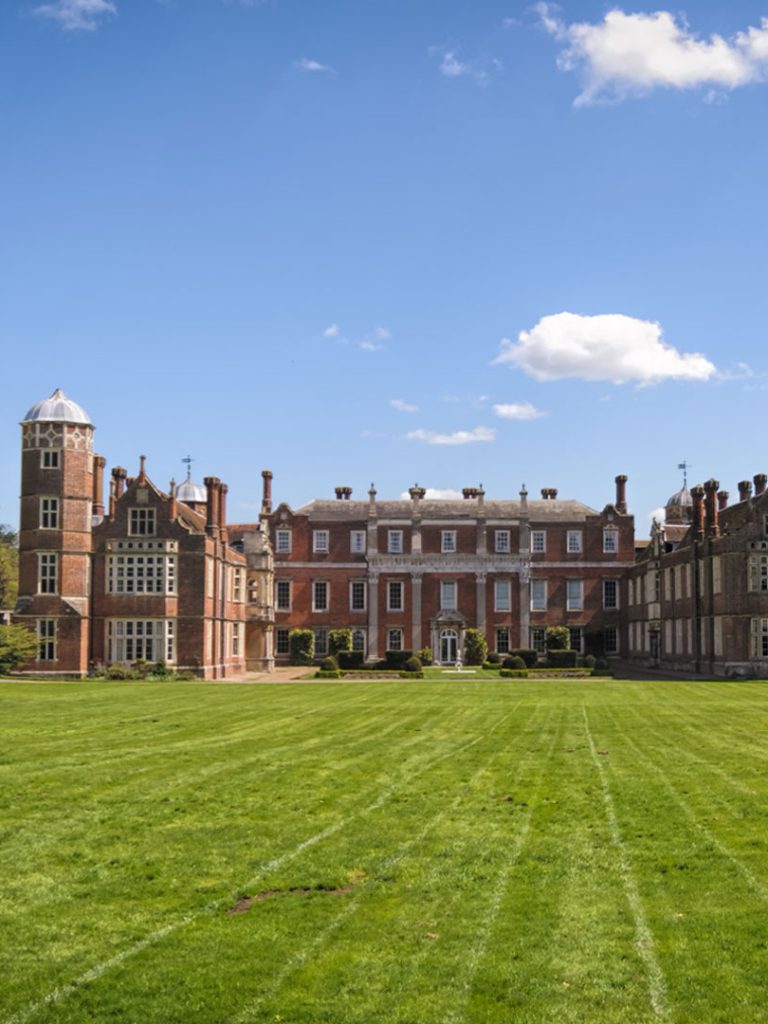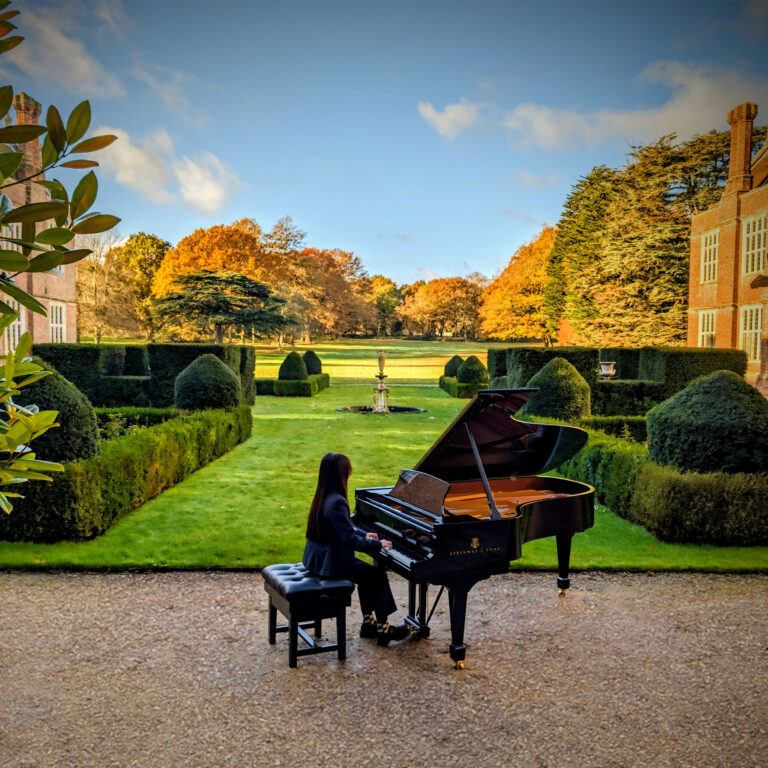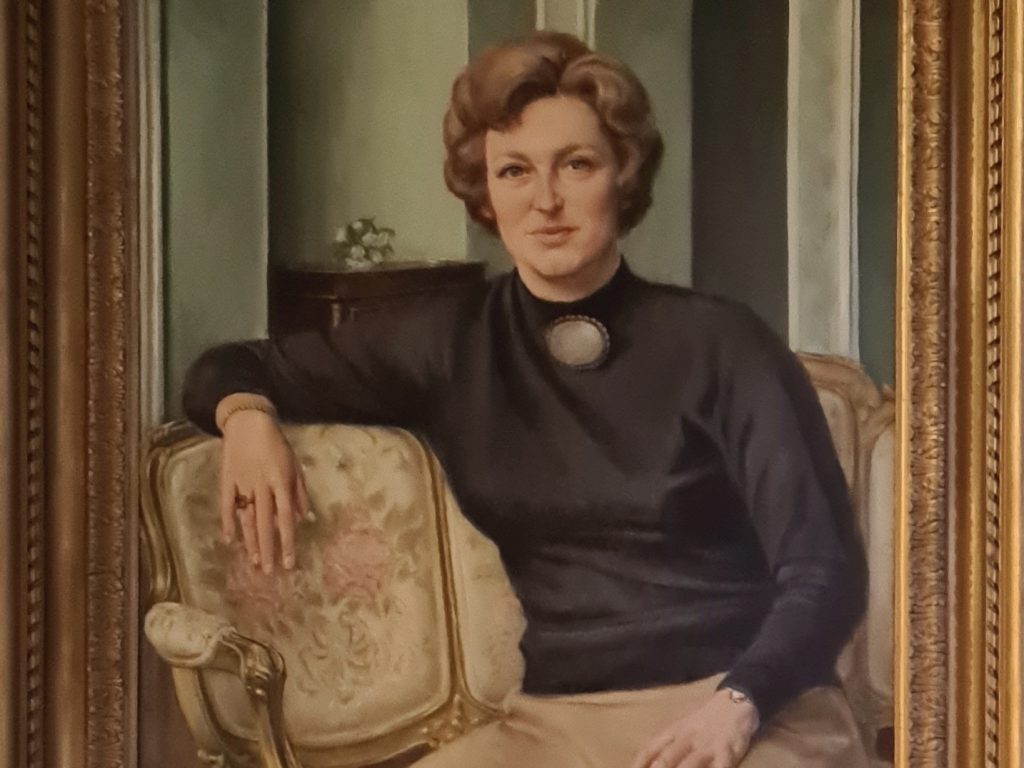We were deeply saddened this week to learn of the death last month of Miss Brenda Hancock, the founding Headmistress of Cobham Hall School.
Miss Hancock presided throughout 1962 over preparations for the School’s launch and its eventual opening in September that year; she remained its much-loved Head until 1971. A woman of extraordinary strength of character, independence and bravery, she served as an exceptional role model for all who met her, and her passing will be mourned by so many of our Elders.
Born in 1932 to British parents in Tsingtao, a coastal town of northern China, Miss Hancock was a great internationalist and traveller. In 1939, she left Shanghai with her mother and brother for England, where she became stranded owing to the outbreak of WW2 and remained for the rest of her school years. She went on to study Modern Languages at Bedford College, London, emerging sure of only one thing: ‘one of the most obvious choices for a female person at the time, teaching, was not for me.’ She trained instead as a shorthand typist, but after a series of dispiriting temporary roles, ‘at last resistance crumbled’ and she became firmly resolved on becoming a teacher.
Arrival at Cobham Hall
After a four-year teaching post in Kenya, Miss Hancock responded to an ad in the London Times for a Head for a new school at Cobham Hall, the first girls’ public school to open in Kent for 16 years. She was not quite 30 years old at the time. In her 2016 memoir, she described seeing Cobham Hall for the first time as ‘a revelation’:
‘It looked to me,’ she wrote, ‘like a lesser version of Hampton Court. The Gilt Hall alone was amazing with its Inigo Jones ceiling, ornate stucco and marble walls, Snetzler organ and exquisitely inlaid floor. This lovely, great house, set in potentially beautiful, though then largely neglected, grounds and surrounded by countryside, yet only twenty-five miles from London, was no obscure setting for a school. It was far more than I had expected, and the possibilities were obvious. From then on, I was ready to take any risk and weather any storm to hold on to the opportunity the Cobham project offered.’
The Cobham project – the plan to open a new independent, international, interdenominational secondary school for girls in historic Cobham Hall – thus became her personal passion. Having found some of the rules and regulations of her own school years ‘unnecessary and even irksome’, she determined to build at Cobham ‘as free a spirit as was compatible with the safe and efficient running of the school’.
Lady Harriet Bligh, who had grown up at Cobham Hall and at 13 joined as one of the school’s first ever students, wrote of her Headmistress:
‘Miss Hancock had, by becoming the youngest ever head … given us a perfect example of successful aspiration. She also managed to make us feel that we were in the right place at the right time. This was a school which would succeed, we were ‘pioneers’ in a venture to create a school unfettered by the weight of outdated traditions, and it was up to each every one of us to contribute.
She dazzled us by her intellect, her lofty ideals, her meditation sessions; she wooed us by her choice of exceedingly good-looking parsons and eminent speakers; she frightened prospective fathers with her forceful eloquence and possibly by the sight of her red long johns peering out under her skirt when sitting at her desk!’
Miss Hancock’s unique vision imbued Cobham Hall life, and echoes still today in our ethos and values. One of her main aims, she wrote, was ‘to keep the atmosphere as positive and happy as possible’; she eschewed competitiveness in the classroom, reserving it for the fun of inter-House competition. In an early understanding of the paradigms underpinning Wellbeing, she created a ‘Silence Room’ near the top of one of Cobham’s towers, as a place set apart for anyone who needed to get away from the ‘noise and bustle of boarding school and just be quiet.’
Soon after her appointment as Head, she was introduced to eminent pioneer educationalist Kurt Hahn, Founder of Gordonstoun School, involved also in the foundation of the Outward Bound organisation and the Duke of Edinburgh’s Award, and the inspiration behind the Round Square Conference of Schools. In 1967, Miss Hancock presided over Cobham Hall becoming the first girls’ school to join the organisation, cementing its ideals as a core part of the School’s purpose and character.
After Cobham Hall
After ten years at Cobham Hall – ‘absorbing, creative, multi-faceted, filled with loving humour’ – Miss Hancock moved on. She travelled to India in 1972, where she met the spiritual leader Mouni BABA, who became a lifelong friend and influence. A year later, she returned to England and became involved in politics, serving as Conservative candidate for Lambeth Norwood in the 1974 General Elections.
In 1975, she became a Principal at the Equal Opportunities Commission, where she worked for 20 years, battling discrimination. She retired with an MBE in 1995 from her position there as Director of Social Policy. Her memoir, ‘Ever-Widening Circles or Road to BABA’, was published by Page Publishing, Inc, New York in 2016. She returned to India in 2019, where she died peacefully on 29th November 2022.
Miss Hancock was a great support to the Alumni Association and will be both mourned and remembered with love and affection by all who knew and worked with her.




